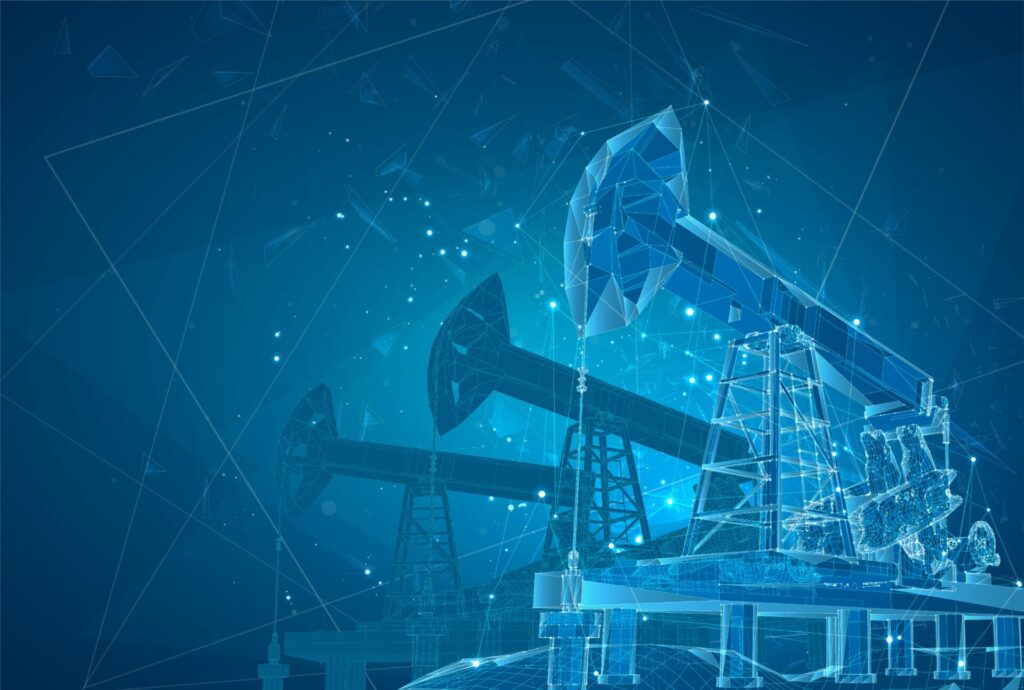
Industrial assets with self-monitoring performance capable of triggering alerts when necessary maintenance or other services are needed might seem futuristic. But in this case, reality might be a lot closer than you think. The first step for oil and gas companies to achieve this vision is to connect each distributed asset. The next step is to establish a completely digital infrastructure. Every stage of upstream, midstream, and downstream operations can then be run with digital tools and systems. Smart Connected Assets can then operate as part of a connected ecosystem with the ability to request help as needed, to fix or heal themselves, and then learn how to improve future performance.
What are Smart Connected Assets?
“Smart Connected Assets” can be defined as equipment or devices that are connected to the Internet. This connectivity (typically via the IoT) enables the performance of tasks based on a self-diagnostic or evaluation process. Over time and with the support of AI, these assets can learn new processes and continue to extend their useful life.
Smart Connected Assets in the oil and gas industry need to provide operators the ability to remotely access and control how they are operated. This two-way communication provides the basis to establish a “relationship” between equipment and operators. This lifecycle of processes starts as new land or sea exploration locations are evaluated for oil or gas extraction. Once the title search is completed and land leases are secured, equipment is deployed to develop the site for exploration.
Here are 3 reasons to digitalize land lease management in Oil & Gas.
The challenge is that often these locations are in remote areas or the middle of the ocean. Internet access may not exist or be spotty at best. However, new satellite communications can now provide cost-effective options to help overcome connectivity issues. Once a field is located, the processes shift to extraction, distribution, and ultimately delivery to the end user or customer.
What’s the Value of a Smart Connected Asset?
Most use cases surrounding Smart Connected Assets are focused on maintenance efficiency, improving operational performance, and minimizing unplanned downtime. Equipment failure leads to a loss of productivity and wasted resource utilization. Other sources of productivity degradation occur with the use of manual or paper-based processes. This concept is referred to as digital transformation, which is now underway in the Oil & Gas and many other industries.
Digital Transformation means shifting to new production, business, and customer engagement models. It enables unprecedented business possibilities like packaged services of industrial equipment, selling capacity instead of capital, and improved performance. Smart Connected Assets are at the heart of their Digital Transformation efforts.
LNS Research, The Role of Smart Connected Assets in Digital Transformation
Oil and Gas companies that invest in smart connected assets can reap the rewards of greater visibility to understand and improve operational performance. Further, these organizations can also establish smart connected operations. Entire production processes can operate with greater fluidity to changing conditions, supply chain disruption, or unexpected resource constraints.
Interestingly, the ability to predict future potential equipment failure is now a reality. This is possible given the quality and quantity of operations data that can now be extracted, collected, and analyzed. A framework of performance improvement can be established as a maturity curve of operational excellence.
| Descriptive | Diagnostic | Predictive | Prescriptive |
| What happened? This is simply the ability to document an event. | Why did it happen? This is to evaluate and analyze what led to the event. | What might happen next? This is a future prediction of what might occur. | What should be done? A smart connected asset could alert an operator on what to do or fix it automatically. |
Prescriptive Assistance In Many Forms
One of the more interesting use cases of prescriptive assistance is a new type of material being evaluated that “self-heals.” Corrosion costs the global economy billions of dollars each year due to costly maintenance programs and reduced-service lifetimes. Autonomic Materials is developing self-healing coatings, sealants, and adhesives based on microcapsule technologies devised by the University of Illinois. This material even allows electrical circuits to repair themselves and can work underwater (source).
Predictive and prescriptive analytics can alert operators when capital equipment is approaching failure. By providing early notification, maintenance, and service processes can be implemented to avoid unplanned downtime or equipment failure. As more data is collected, artificial intelligence can be applied to provide even greater intelligence and insights for continued operational excellence improvement.
Taking this one step further, assets will soon self-diagnose not only themselves but other assets within their ecosystem. This approach can provide huge productivity improvements on a wider scale. These types of systems could reroute, shed load, or shut down to avoid cascading failures. The ability to achieve these results starts with the implementation of sensors, networks, analytical tools, and data management programs. The result is a collection of smart connected assets that operate as an extension of the labor force.
Smart, Connected Title & Land Lease Management
These same concepts can be applied to land exploration associated with identifying and locating new drilling sites. Or the evaluation of an existing inventory of land parcels and the future potential profitability. A series of scenarios can be programmed to be triggered based on a collection of input variables. This type of system can be configured to begin processing and suggesting a prescriptive output based on any number of input variables. High-performance automation combined with intelligence gathered by shifting market conditions is the recipe for intelligent process automation. This approach is a powerful strategy to improve overall operational excellence.
